- 1404/01/19 Comparative Evaluation of the Effects of Antimicrobial Photodynamic Therapy With an LED and a Laser on the Proliferation of Human Gingival Fibroblasts on the Root Surface: An In Vitro Study
- 1403/11/29 The Effect of Different Output Powers of Blue Diode Laser along with Curcumin and Riboflavin against Streptococcus mutans around Orthodontic Brackets: An In Vitro Study
- 1403/11/29 Assessment of photobiomodulation therapy by an 8l0-nm diode laser on the reversal of soft tissue local anesthesia in pediatric dentistry: a preliminary randomized clinical trial
- 1403/11/06 Report on the Third Section of the Seminar on Laser Treatment for Dentinal Hypersensitivity
- 1403/11/06 Report on the Second Section of the Seminar on Laser Treatment for Dentinal Hypersensitivity
- 1403/11/04 Report on the on the First Section of the Seminar on Laser Treatment for Dentinal Hypersensitivity
- 1403/11/04 Selected Research Titles from 2021 (Year 1400) at the Center

The advanced equipment and devices at our center are also utilized for patient care
Laser Therapy Equipment
CO₂ Laser
The CO₂ laser is a gas laser operating in the infrared spectrum with wavelengths of 9300 nm and 10600 nm. This wavelength is highly absorbed by water, allowing precise cutting of soft tissues while ensuring effective hemostasis. Its shallow penetration depth in soft tissue makes it particularly advantageous for treating mucosal lesions. In surgery, it provides excellent coagulation and a clear, visible surgical field. CO₂ lasers exhibit the highest absorption in hydroxyapatite. However, they require more time to ablate hard dental tissues, which are primarily composed of hydroxyapatite with a high melting point of 1600°C. This prolonged exposure can lead to carbonization, melting, and cracking of enamel
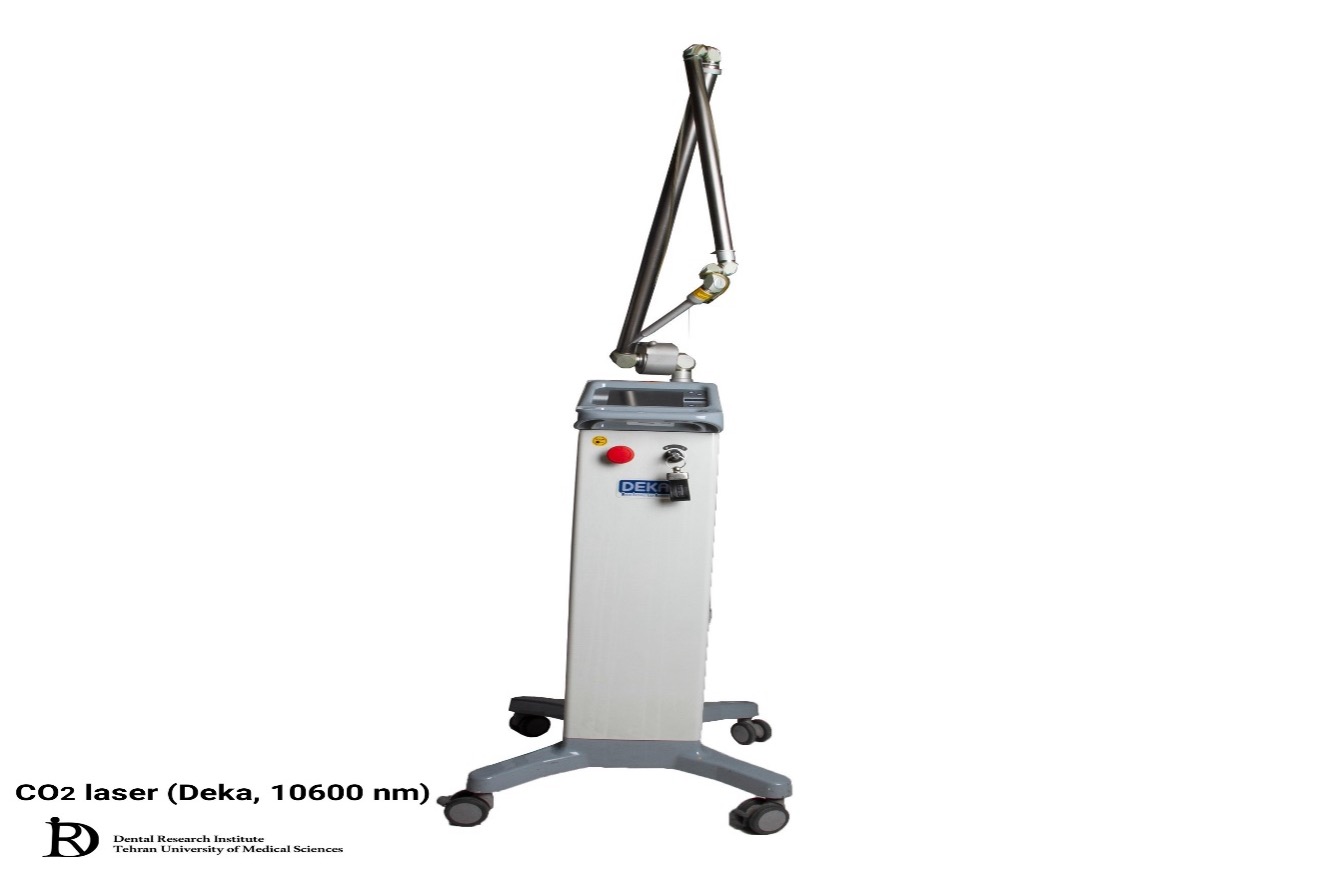
Er:YAG Laser
:Erbium lasers fall within the infrared spectrum and include two main types
Er,Cr:YSGG (Erbium, Chromium-Doped Yttrium, Scandium, Gallium, and Garnet) with a wavelength of 2780 nm.
Er:YAG (Erbium-Doped Yttrium Aluminum Garnet) with a wavelength of 2940 nm.
These solid-state lasers are well absorbed by water and hydroxyapatite, making them suitable for cutting bone and hard tissue, in addition to soft tissue procedures
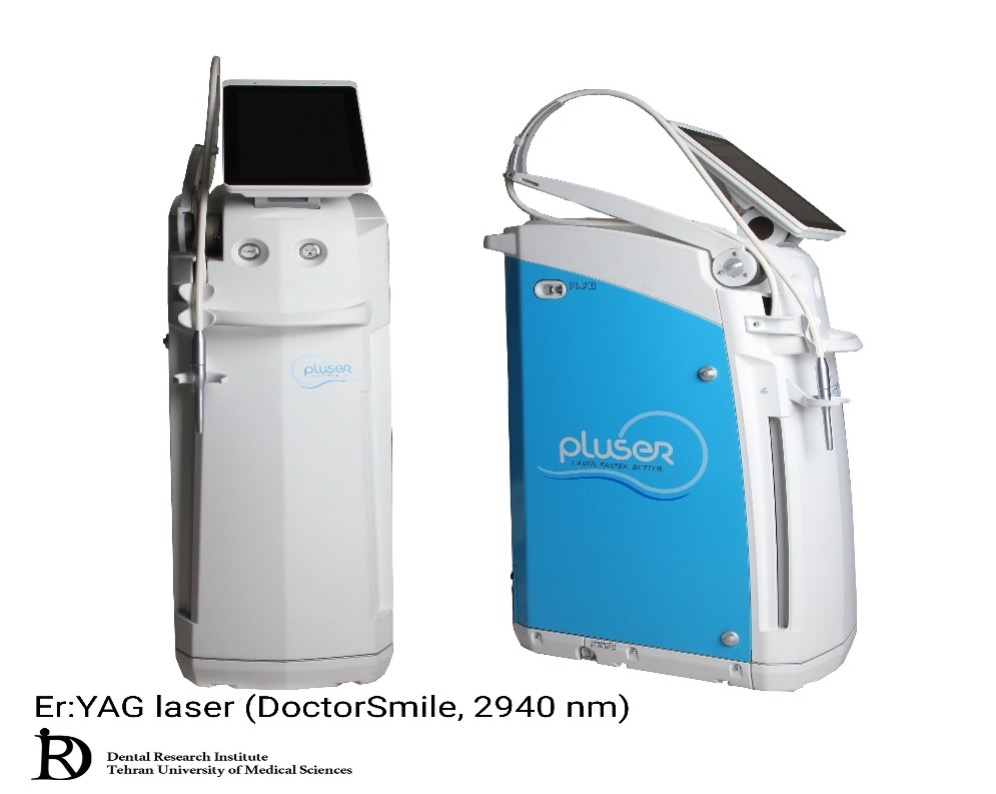
Nd:YAG Laser
The Nd:YAG laser is ideal for soft tissue treatments as it is readily absorbed by pigmented tissues and penetrates deeper than CO₂ lasers. It is effective for soft tissue cutting, ensuring excellent hemostasis and providing a clean, visible surgical site. Clinical applications include gingival debridement in periodontal disease, LANAP (Laser-Assisted New Attachment Procedure), and soft tissue surgeries. It is also used for treating early dental caries, aphthous ulcers, root canal treatments, and more, with a wavelength of 1064 nm.
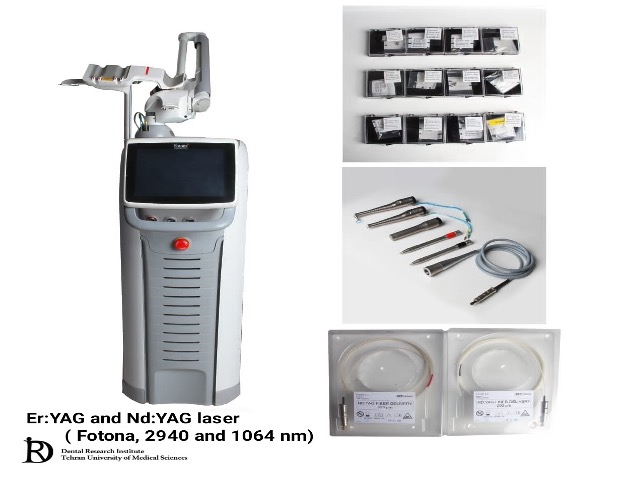
Diode Laser
Diode lasers, made from semiconductors like gallium arsenide (GaAs) and gallium-aluminum-arsenide (GaAlAs), have wavelengths ranging from visible light to infrared. They are not absorbed by hard tissues but are efficiently absorbed by hemoglobin and pigments, making them ideal for soft tissue removal and procedures like frenectomy, gingivectomy, biopsy, and more. Low-power diode lasers are used for nerve regeneration, reducing post-surgical inflammation, and pain management. Some diode lasers are also utilized for detecting decay and calculus, tooth whitening, and root canal disinfection
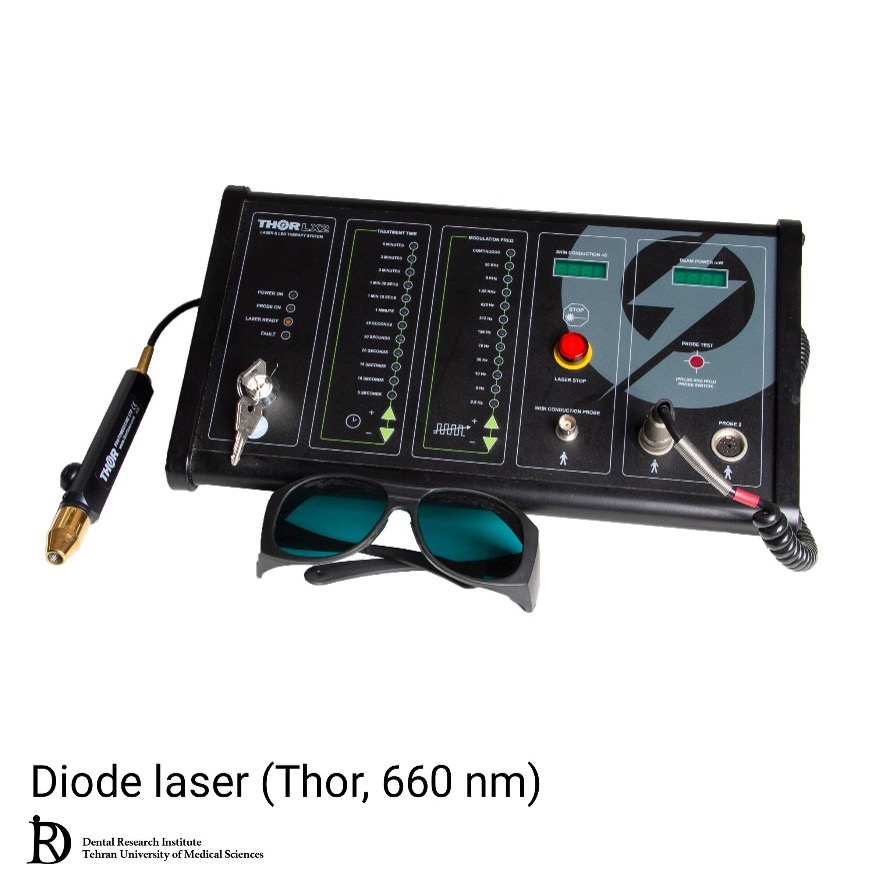
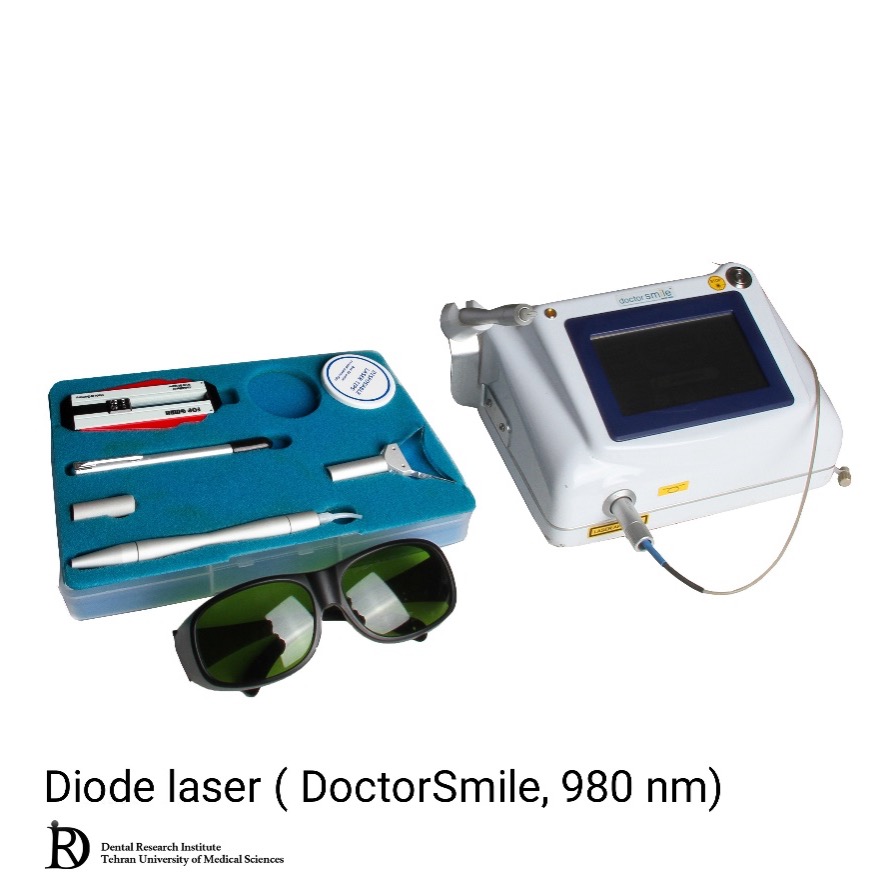
LED Device
The LED device operates at a wavelength of 630 ±10 nm and is used in photodynamic therapy
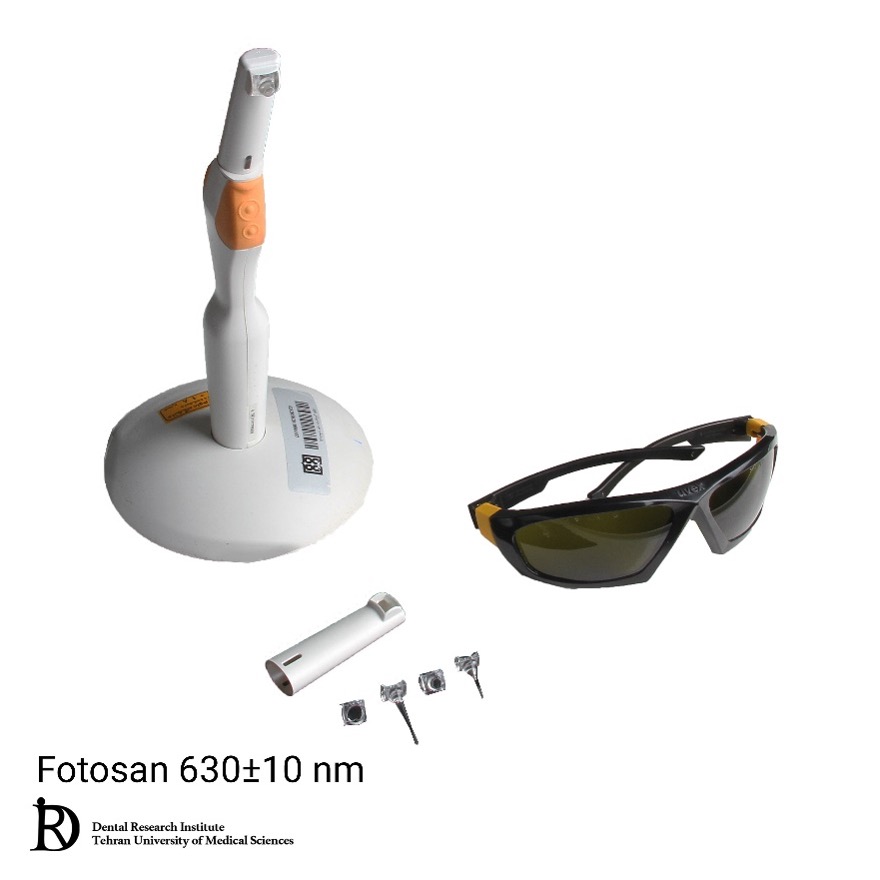
Oral ID
The Oral ID device is employed for screening cancerous and precancerous intraoral lesions. Utilizing blue fluorescence light (435–460 nm), it highlights abnormal tissue as dark areas due to the lack of fluorescence
 .
.
Clinical Applications of Laser Devices
Lasers enable safe clinical procedures with minimal bleeding, primarily through thermal effects from the conversion of energy into heat. Additionally, lasers are used for biostimulation, where their effects rely on cellular mechanisms rather than temperature increases, particularly with low-power lasers. In dentistry, the most commonly used lasers include Nd:YAG (1064 nm), Er:YAG (2940 nm), Er,Cr:YSGG (2780 nm), diode lasers, and CO₂ lasers. Proper wavelength selection is crucial, as the laser beam's photons must be absorbed by biological tissues to produce localized thermal effects.
Overview of Treatment Services Offered by the Center
Laser Device Services
| Laser Device | Service Description | No. |
|---|---|---|
| Erbium | Preparation of restorative cavities | 1 |
| Erbium, CO₂, Nd:YAG | Surface preparation of enamel, dentin, porcelain | 2 |
| Erbium, Diode, Nd:YAG | Bleaching | 3 |
| Erbium, CO₂, Nd:YAG, Diode | Soft tissue surgery | 4 |
| Erbium | Hard tissue surgery | 5 |
| Erbium, Diode, Nd:YAG | Root canal disinfection | 6 |
| Erbium, CO₂, Nd:YAG, Diode | Fluoride therapy | 7 |
| Nd:YAG, Diode | Photobiomodulation (Low-Level Laser Therapy) | 8 |
| Diode | Photodynamic therapy | 9 |
Additional Treatment Services
| No. | Service |
|---|---|
| 1 | Frenectomy |
| 2 | Gingivectomy |
| 3 | Fibroma removal |
| 4 | Vestibuloplasty |
| 5 | Small-area depigmentation |
| 6 | Large-area depigmentation |
| 7 | Tooth exposure |
| 8 | Bleaching |
| 9 | Low-power laser therapy |
| 10 | Veneer debonding |
| 11 | Pocket therapy |
| 12 | Epulis removal |

